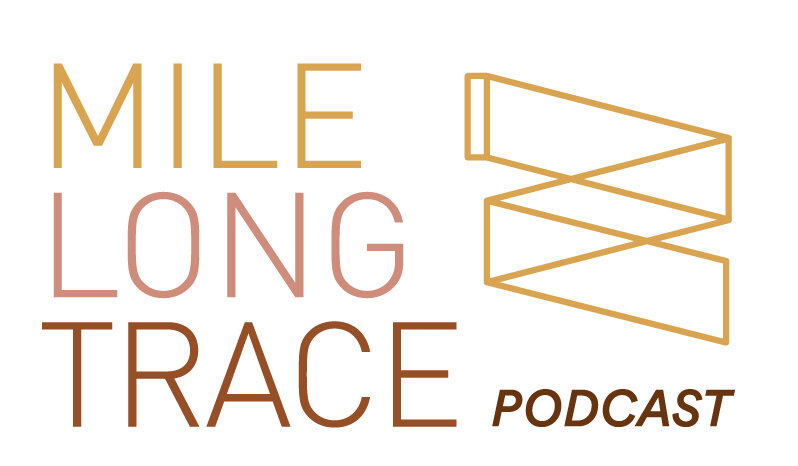“I feel my sharpest in my design work when I return from travel. I'm more instinctive. I'm more emotional because I have a bank of inspiration to draw from.” – Casey Martin
Overview
Interior designers have the capacity to produce thought provoking work that is regionally empathetic and culturally diverse.
When we travel, we open up to observing and learning about other cultures. During the process of observation we break down internal cultural biases. We become empathetic to other ways of living, working and socializing. We learn how to create culturally appropriate responses to global design problems. We increase tolerance among other cultures, religions and race. When we lean into a worldly viewpoint we are one step closer to promoting social justice. In this episode we will explore the importance of travel in the design practice and how to adopt this thinking while we can not travel.
Guest Summary
Casey Martin is an interior designer and educator. She has practiced nationally and internationally on LEED projects in Hawaii and South Korea. Since 2009 Casey has practiced at Mitsunaga & Associates out of Hawaii, supporting the architectural department with planning and interior design services. Casey leads a design practice with Reverie Design Studio. She taught an exploratory course called Multi-global Design working with students creating empathy and culture awareness. Casey has traveled extensively and documents her experience through a travel blog called Land of Marvels.
Casey Martin, Interior Designer, Avid Traveler and Blog Host of Land of Marvels
Why is it important for interior designers to travel?
Travel exposes one to different cultures by pulling one outside of their comfort zone. It forces one to ask why. The act of travel slows one down so they can begin to understand why a culture does something differently. That questioning makes one a better designer. It forces one to look at everything from a wider perspective then what was taught in school or in one’s early years of practice.
Once one is exposed to something one cannot un-see it. By seeing something from a different lens ones design practice becomes more globally accepting. Travel creates empathy, understanding of cultural sensitivities and opens one’s mind to having a more culturally diverse design approach.
The regionalism of architecture is traditionally a response to climate, geography and the access to materiality. When observed on a closer level one can find influence of philosophies, theories and political beliefs of that community in the design. As one observes regions across the globe one finds a difference in principles of design through symbolism and meaning. This is built into the forms of the space, the furnishings, the applied art and all those elements that touch the interior. For those that are kinesthetic learners, physically traveling helps imprint this learning that cannot be replicated in research. In order to be more culturally empathetic in our own design response it is important for interior designers to feel space. Travel triggers an emotional response in us that invigorates our senses.
How can a interior designers apply travel to their practice?
This process begins with inquiry and being open to understanding what influenced the design. If your left wondering how to deepen your practice, here are 6 tips:
1. To be a better designer, immerse yourself in diverse cultures filled with indigenous traditions. Cultures that are polar opposite from your own. Lean in without judgement.
2. Observe spiritual and political intentionality and how that influences the forms, proportions, patterns, and materials in the built environment.
3. Inquire without judgement by asking yourself why something is done a certain way. What were the drivers? Is it a cultural, political, spiritual, regional, or geographical influence?
4. Reflect on the intentions behind regional motifs. Look for parallels in others work and study the similarities and differences. By journaling and sketching you confirm your thoughts and preserve them for when your ready to apply them to a project.
The power of reflection is key to closing the loop on experiences we have in environments. It cements our learning and helps us not only document but form a response to what is observed.
5. Advocate to preserve regionalism, and the emotions behind the history. Just because it is new does not make it better. The history of a space can evoke an emotional response that is unreplicable in new construction.
6. Be a life long learner. As you develop your design practice you will develop ‘go-to’ details and approaches to design. Curb yourself at times and repeat this process.
If you want to see some more beautiful travel inspiration and get some travel advice head on over to Land of Marvels.
Keep observing, traveling with your minds and designing!
Credit
Branding & Graphic Design work by Andrea Schwoebel https://www.andreaschwoebel.com/
Cover Artwork Photo by Photo by Robert Nyman on Unsplash
Headshot provided by Casey Martin
Photo by Annie Spratt on Unsplash
Photo by bantersnaps on Unsplash
Photo by Catarina Carvalho on Unsplash
Photo by Prem Babu Moktan on Unsplash








